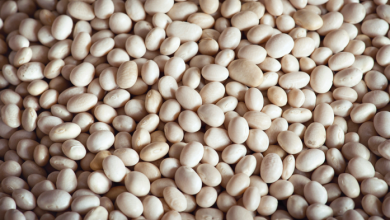How to have your robotic garden: a garden that grows itself
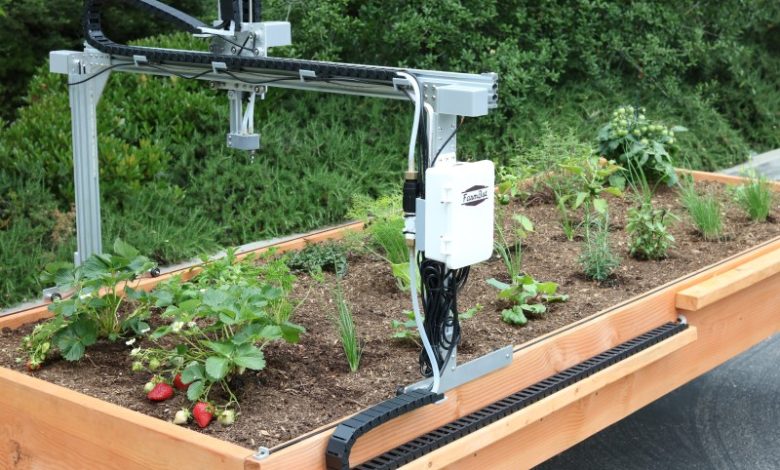
Today I am going to talk about a tool for cultivating the garden without practically doing ANYTHING: the FARMBOT robot-farmer. Having a robotic garden at home… not bad, huh? Especially for those who don’t have much time to pay attention to the garden during the day… Let’s see it.
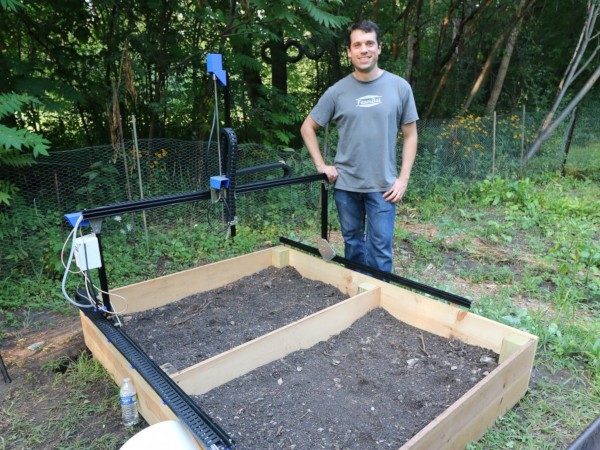
What is Farmbot and what does it do?
It is a machine that can turn your small urban garden on a terrace into a real robotic garden that sows, waters and removes weeds on its own.
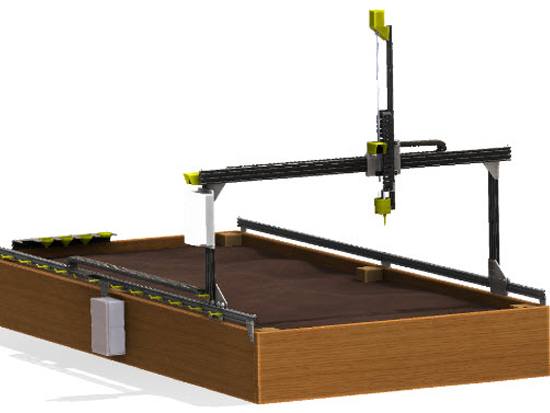
As it does? Well, apparently in a very simple way… The bar that you see in the image raised above the bed moves longitudinally covering the entire length of the bed, and the tool that is on the bar moves laterally covering the entire width (adjustable length and width, maximum 1.5 x 3 meters). This tool, in addition to moving sideways, also goes up and down, approaching the ground to carry out the different tasks: first, it takes the seeds of the different species that it is going to cultivate from small containers, and then it makes the holes and introduces the seeds into the right place as we have «ordered» it (you can intersperse different vegetables according to our previous design).
For each task, it puts on its own the interchangeable head with the appropriate instrument: the automatic seeder or seed injector, the head with an irrigation nozzle, a head with a camera that identifies the weeds, another that later kills them by crushing them and inserting them into the earth… (in the video from 0:29 to 0:36 you can see how it performs this task). It even has a sensor to measure the humidity of the soil and know if it needs more water depending on how hot it is at any given moment…
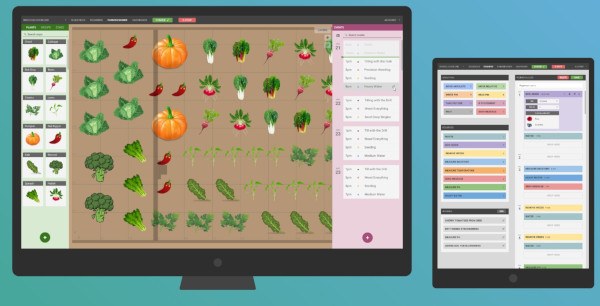
All these tasks are first programmed in the computer thanks to a software with which the garden is designed and it is specified which plants we want and where we will put them. It is an easy-to-use tool, it can even be fun to use with children, since the distribution of the different plants on the bed is chosen with a system of “ drag-and-drop” drawings that seems very intuitive.
What advantages does this robotic garden have?
First and for me the most important: you will save a lot of time since it performs most of the tasks on its own.
This robotic garden can grow a lot of different species in 5 square meters of terrace and manage them independently, so you can take full advantage of the beneficial associations in the garden.
It is very precise: just enough water is spent since it is a localized irrigation (such as drip irrigation or exudation irrigation) that adds water only to the portions of land where the plants are. In addition, it irrigates each of them with the amount of water they need, neither more nor less… Being an «intelligent» system, it knows where each species is and applies the appropriate irrigation according to the needs of each plant.
Another advantage: you can combine it with a solar energy system. This way you will save energy and collaborate in the protection and sustainability of the environment. In addition, once the installation of solar panels has been amortized, you will also save money on electricity and you will even be able to use those panels for other installations in your home.
You can also install a rainwater collector and connect it to the robotic garden so that it uses that recycled water for irrigation. Like the use of alternative energies, recycling is another of the typical actions of an ecological and sustainable garden.
But… Is it profitable? How much?
According to its designers, what it costs to buy the machine, the installation, the land, etc. It pays for itself in less than three years, taking into account that we are going to save time and money buying fresh vegetables. In my opinion, the life that we would extend to the planet if we all efficiently cultivated our own organic food as with FarmBot and the improvement of our health cannot be valued economically.
Problem? Its creators, some young engineers, did not have enough money for its mass production… So what they are doing is processing FarmBot orders, charging them in advance (about $3,500) and using that money to build the robotic garden and to make improvements and continue researching. Right now orders are being shipped with a waiting period of about 7 months.
The good thing about all this is that this technology is free, open source. They freely share both the software and the manufacturing and assembly instructions, help photos and videos, and have even created a collaboration forum. This means that any group of people or any company can develop this technology as long as they have the means and the money to do so. In fact, there are already several companies that have used this invention and have commercialized robotic orchards. Although, if I bought it, I would buy it from its creators, of course… Great contribution to precision agriculture!
If you still have doubts or curiosities about this robotic garden, you can take a look at its page: FarmBot.io, where you will find data, videos and studies about this great invention!


![Photo of Plant Leeks: When, How, Where and much more [12 Steps]](https://www.complete-gardening.com/wp-content/uploads/2022/08/plant-leeks-when-how-where-and-much-more-12-steps-390x220.jpg)
